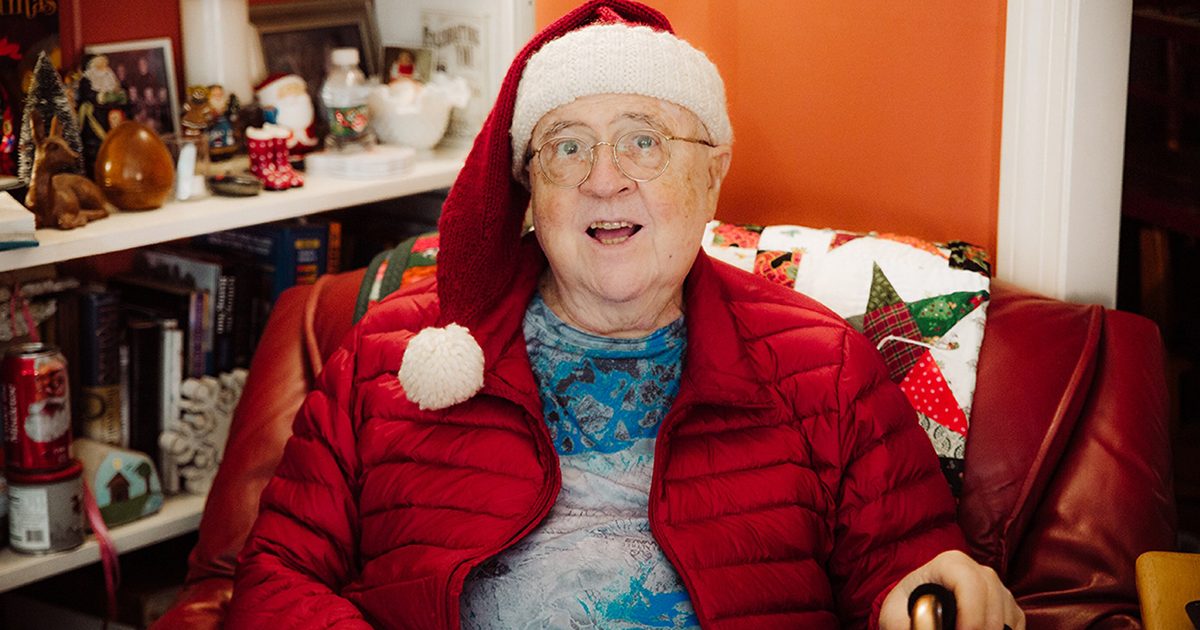What Kind of Cancer is Sarcoma?
- The beloved Santa Claus of Louisville, Ky., has shaved his long white beard as he fights a stage 4 soft tissue sarcoma, but he says he remains in good spirits.
- There are a large number of chemotherapy treatments that cause hair loss, but not all of them; others cause hair thinning. Nurse practitioner Vivian Ruszkiewicz stresses that if you are concerned about your hair, talk to your doctor or nurse practitioner about what to expect from your chemotherapy treatment.
- Sarcomas are cancers that arise from the cells that hold the body together. They can occur in muscles, nerves, bones, fat, tendons, cartilage or other forms of connective tissues.
"I'm in good spirits and I'm just physically strong and ready to deal with this thing, whether it can be destroyed or whether I just go into remission,” Walt Queen, 78, tells Fox News Digital.
Read MoreSanta's Cancer Diagnosis
Queen, who has been playing Santa in Kentucky for the last 15 years, was diagnosed with soft tissue sarcoma at the end of last year. Unfortunately for Queen, by the time doctors caught his cancer, it had already spread throughout his body, hence his stage 4 diagnosis. But doctors still attempted treatment.The 78-year-old underwent two rounds of chemotherapy, and had to spend four days in intensive care since the treatment put him in "such bad shape." But now, he is feeling better.
One common side effect of chemotherapy is hair loss; Queen knew this meant his beard would ultimately fall out, so he took matters into his own hands and shaved it off on Jan. 18. (He had his beard for at least 45 years before shaving it off!)

"We thought it would be easier on my grandkids, too, if we did that," Queen says. "They thought it was really funny to see me without a beard."
"My wife really summed it up well," he adds. "She said, 'Man sees your beard, God sees your heart.' And because of that, I was at peace about it. It really was not a big deal because I knew that that was going to happen when I had the chemotherapy, so I was prepared for it emotionally."
Coping With Hair Loss
Vivian Ruszkiewicz, a nurse practitioner with OhioHealth, a not-for-profit system of hospitals and health care providers in Columbus, Ohio, tells SurvivorNet that hair loss is one of the more "distressing" side effects of chemotherapy.
"It's one of the things that people can see from the outside that people may know that you are ill," she says, "and that poses a lot of stress for patients."
There are a large number of chemotherapy treatments that cause hair loss, but not all of them, she says; others cause hair thinning. Ruszkiewicz stresses that if you are concerned about your hair, talk to your doctor or nurse practitioner about what to expect from your chemotherapy treatment.
Chemotherapy Side Effects Hair Loss
She says that some people who only experience partial hair loss still choose to wear a wig, like many people who lose their hair completely, before chemo so that they are prepared, "so they can feel more like themselves during chemotherapy."
Ruszkiewicz says that hair loss begins about three to four weeks after your first chemo treatment; you could start to see some hair regrowth about four to six weeks after your last treatment.
"Then it will kind of continue from there, as long as you aren't being treated with another medication that might cause hair loss," she says. "But in general, most people do have a resumption of hair growth, and can slowly over time put away their wigs and scarves, and are able to kind of go back to what they expected in terms of their hair growth."
In other words, remember that hair loss is temporary! Queen knows this for a fact; since he has finished chemotherapy and is now taking a new medication for his sarcoma cancer, he says his beard has already started to grow back!
"Who knows," he says. "I could have a beard I'm sure it won't be as long as it was before we shaved it off but I could have a beard long enough to…do some Santa visits."
"As long as I'm physically able, it is my intention to continue to spread the joy of Christmas to the kids," he adds.
What Kind of Cancer is Sarcoma?
Sarcomas are cancers that arise from the cells that hold the body together. They can occur in muscles, nerves, bones, fat, tendons, cartilage or other forms of connective tissues.
"There are hundreds of different kinds of sarcomas, which come from different kinds of cells," Dr. George Demetri, director of the Sarcoma and Bone Oncology Center at Dana-Farber Cancer Institute and Harvard Medical School, tells SurvivorNet.
The word sarcoma refers to a large array of bone and soft tissue cancers; it is unknown what type of sarcoma Queen has been diagnosed with. Those are then further broken down into more specific forms of the disease, including:
- Ewing's sarcoma Cancer that typically occurs in and around the bones, often in the arms or legs, or the bones of the pelvis. It most commonly occurs in children and young adults.
- Kaposi sarcoma Rare type of cancer that causes lesions on the skin, in lymph nodes, organs and the mucous membranes of the mouth, nose, and throat. It typically affects people with compromised immune systems, such as those with HIV.
- Epithelioid sarcoma Soft tissue cancer that grows slowly. It's likely to begin under the skin of areas like the finger, hand, forearm, lower part of the leg or foot.
- Synovial sarcoma Known also as a malignant synovioma, this is a cancer that can form soft tissues such as muscle or ligaments, commonly close to joints or in areas like the arm, leg or foot.
- Osteogenic sarcoma Known also as osteosarcoma, this cancer forms in the bone and is most common in young children.
- Spindle cell sarcoma Rare form of the disease that accounts for less than 2% of all primary bone cancer cases. It's most common in adults over age 40 and often forms in the bones of the arms, legs and pelvis.
- Angiosarcoma This cancer appears in the lining of the blood vessels.
- Liposarcoma This cancer develops from fat cells and often occurs in the torso, limbs or deep within the abdominal lining.
- Chondrosarcoma This cancer occurs in the cells of the cartilage, mostly in adults over the age of 40.
"Unfortunately, most sarcomas don't cause many of the symptoms that may be associated with other cancers," Dr. Dale Shepard, director of the Cleveland Clinic Taussig Cancer Institute Phase I and Sarcoma Programs, tells SurvivorNet. Shepard also explains that this often leads to large tumors at the time of diagnosis.
"Soft tissue sarcomas are typically painless," he adds. "Bone sarcomas may be mistaken for orthopedic injuries. A mass the size of a golf ball or larger and growing should be evaluated as a potential sarcoma. It's important that patients who do have symptoms are not dismissive of them."
Contributing: SurvivorNet staff
Learn more about SurvivorNet's rigorous medical review process.


